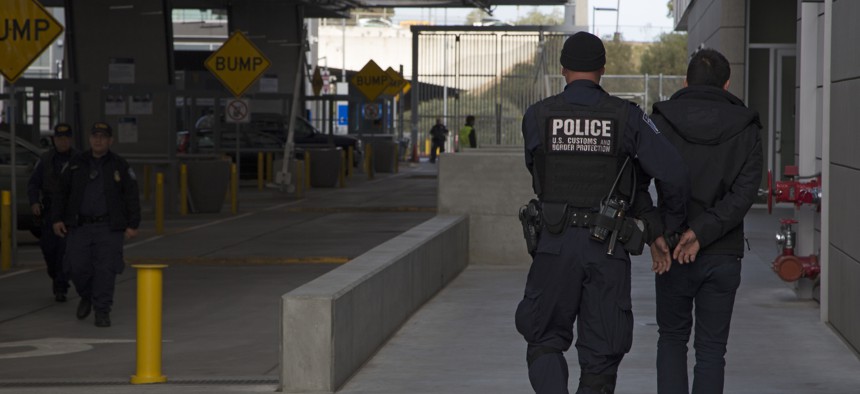Even Before Trump, Most of the People Arrested by Federal Agents Were Immigrants
The data clearly contradicts his narrative about lax enforcement.
To hear it from Donald Trump and other immigration hardliners, the US government has been skirting its responsibility to enforce immigration laws for years.
In a memo issued April 11, Attorney General Jeff Sessions ordered federal prosecutors to crack down on undocumented immigrants who commit crimes by prioritizing their cases and seeking harsher sentences. “This is the Trump era,” he said, according to prepared remarks, to Customs and Border patrol agents in Nogales, Arizona. “The lawlessness, the abdication of the duty to enforce our immigration laws and the catch and release practices of old are over.”
Data from federal arrests, however, show an increasing emphasis on punishing those who break immigration laws well before the Trump election, according to an analysis by the Pew Research Center published April 10. Immigration-related crimes accounted for half of criminal arrests by federal agents in fiscal 2014, the latest year for which figures are available. That’s up from less than 30% in fiscal 2004.
Overall, roughly six out of 10 arrests by all federal agencies involved a non-US citizen, up from around four in 10. That suggests US authorities had been going after immigrants who have committed crimes, or as Trump would call them “bad hombres.”
The growing share of immigration-related arrests is the result of the US’s ballooning border-enforcement budget over the past decade. The immigration-related arrests are for criminal offenses, such as entering the country illegally or helping others do that, and are different from immigrant apprehensions and deportations. As they rise, the share of federal arrests for other types of crimes—drug trafficking, embezzlement and owning an unregistered gun—have dropped.
Indeed, the US Department of Homeland Security has become the federal government’s top arresting agency, surpassing the Department of Justice. It was responsible for nearly 60% of federal criminal arrests in 2014, up from 37% in 2004. The justice department’s share, meanwhile, shrunk to 35% of arrests from 48% in the same period. A single homeland security agency, Customs and Border protection, arrested more people than the whole Justice department in 2014, says Pew.
To be sure, arrests by federal agents account for a fraction of all US arrests, which are largely made by local police. But the data clearly contradict Trump’s narrative about lax federal enforcement on immigration and immigrants.
The Trump administration appears to have mischaracterized the role of police departments in helping combat illegal immigration. Last month, the Homeland Security department published a 25-page document listing every local law enforcement agency that, according to its assessment, refused to cooperate with federal immigration agents.
It was part of a strategy to shame “sanctuary” jurisdictions, or cities and counties that provide some kind of protection to immigrants. But after many of the singled-out agencies complained that their policies were being unfairly represented, the government is temporarily halting the report’s publication.
A department spokeswoman told The New York Times the suspension will allow the agency to “analyze and refine its reporting methodologies.”



